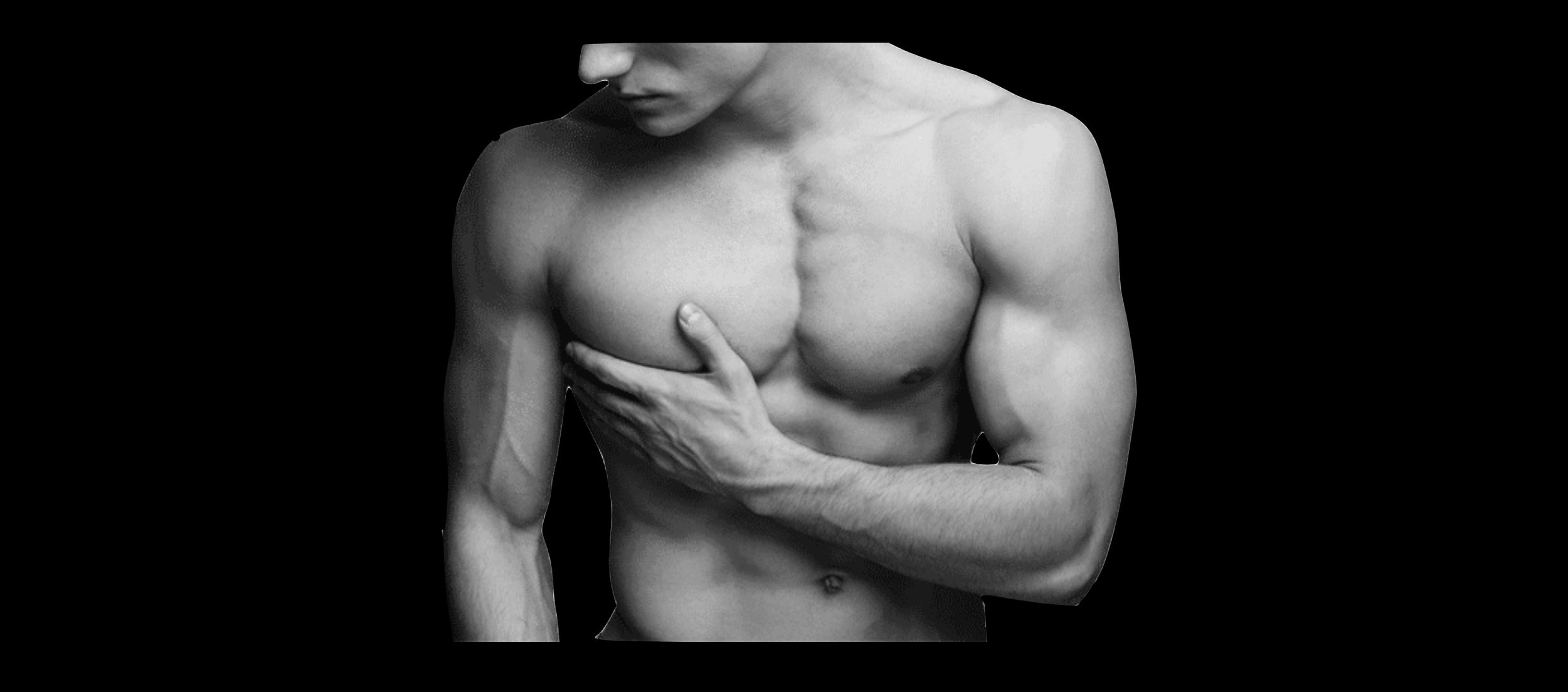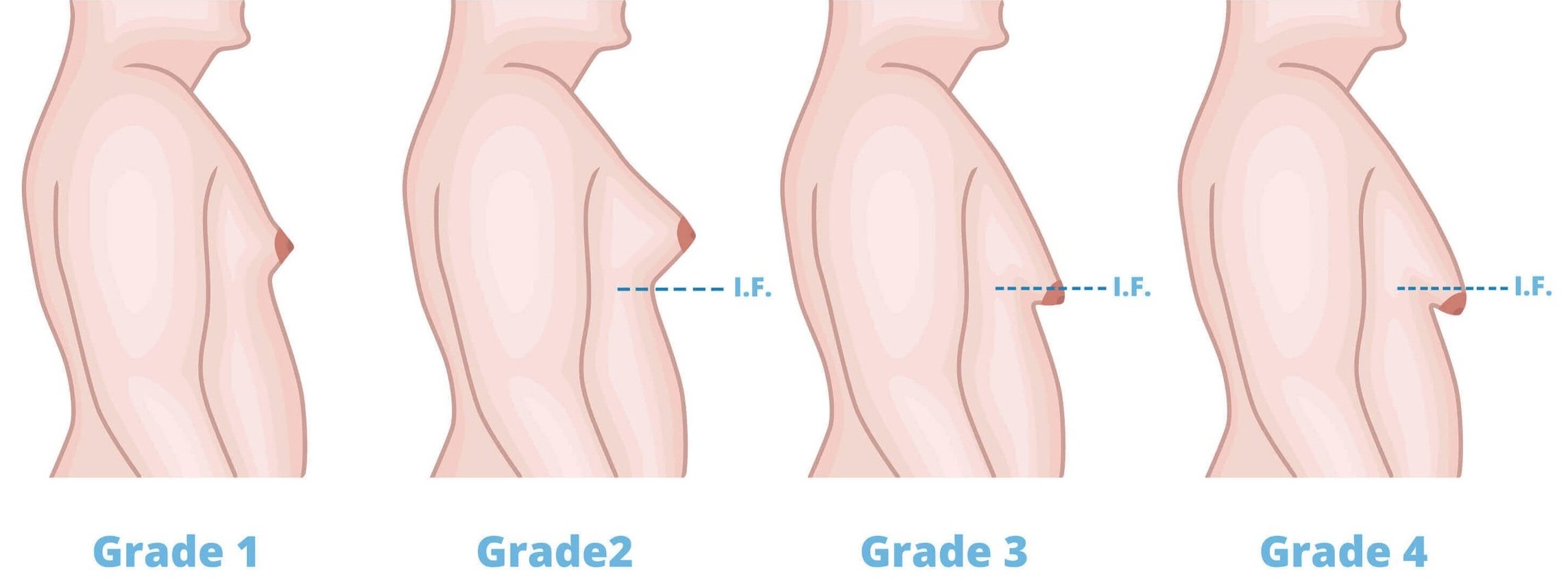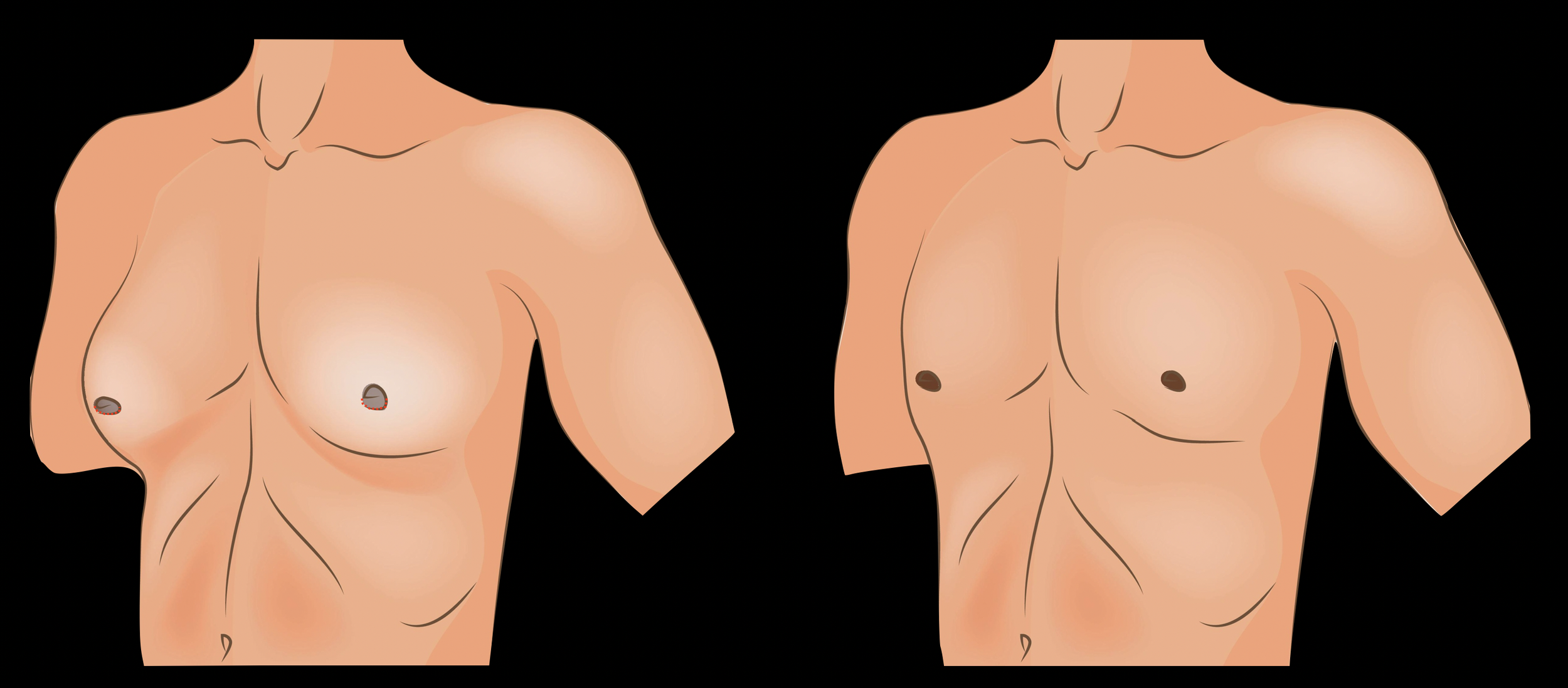Gynaecomastia
Claim back your defined chest
Gynaecomastia is a benign condition, characterised by the formation of breast glandular tissue in men. It is often the cause of physical and emotional discomfort and the impact on the daily life cannot be underestimated. In every man with gynaecomastia, there is a work-up to be done. I explain that in more detail below. However, the key message here is that gynaecomastia is treatable. The surgical techniques that I apply depend on the degree of gynaecomastia. I do not only take the weight off of your breast, but also off of your shoulders. A well-defined, masculine chest contour will not only significantly improve your quality of life, but also give you a boost in self-confidence.
The essentials
Gynaecomastia is a benign condition, characterised by the formation of breast glandular tissue in men.
It is a treatable condition for which multiple surgical options exist. Usually a combination of liposuction with surgical excision gives great results.
Known causes for gynaecomastia include: certain medication use - liver cirrhosis - thyroid disease - marijuana usage - weight gain - weight loss.
If there is a known cause, treatment needs to address the cause before any surgery is done. Otherwise, surgery will not offer a long-term solution.
Idiopathic gynaecomastia is a term that is used when there is no specific cause linked to the diagnosis. It is a benign condition and treatable through surgery.
Before surgery, a thorough check-up is necessary, including a blood sample to check several hormones, as well as an ultrasound of the chest and testicles.
Surgical treatment involves advanced techniques of liposculpting and radio-frequency to recreate the contours of a male chest with an open excision of the remaining glandular tissue through a small incision around the areola.
A gynaecomastia treatment may give you functional and aesthetics benefits, as well as a boost in self-confidence and improved quality of life.
Consider a downtime of 1 week with easy dressings. Avoid physical activity for 6 weeks.
Respect the recovery time well and you will profit from the transformation for the rest of your life.
What causes gynaecomastia ?
Although the clinical representation of gynaecomastia is fairly constant, the possible causes vary widely. Whenever you have the impression that you feel glandular tissue below your nipple-areolar complex or see an increase in volume on one or both sides of the chest, try to consider the following causes:
The use of certain medication: Spironolactone, Ketoconazole, Amlor, Zanidip, Digoxine, Ranitidine
A known or diagnosed liver cirrhosis
A known or diagnosed thyroid disorder
The recreational use of marijuana
Weight gain with increased size of the breast tissue
Weight loss with remaining breast tissue
In very rare cases, gynaecomastia may be caused by certain types of cancer, such as testicular cancer or renal cancer. In the work-up, I explain what to do to rule out this diagnosis. But is important to keep this in mind and run the necessary tests and check-ups.
If all the above causes are ruled out, then we have a so called "idiopathic gynaecomastia". This basically means "gynaecomastia without a known cause". Idiopathic (benign) gynaecomastia is usually related to an imbalance of the hormonal levels, where there is an over-production of estrogen (the female hormone). In most cases, this occurs either during puberty or after the age of 50. Although this is completely benign, it can cause a lot of physical and emotional discomfort. Surgical treatment is therefor recommended to not only improve the chest aesthetics, but also make you look better in a shirt or T-shirt and give your self-confidence a boost.
There are 4 grades of gynaecomastia, depending on the size of the breast and position of the nipple. The surgical technique depends on the grade and clinical investigation.
What is the work-up for gynaecomastia ?
As I mentioned before, in every case of gynaecomastia, specific causes and diseases need to be ruled out before we can go over to surgery. If there is a specific cause that can be treated, this must be done first. Otherwise, surgery will not offer a long-term solution. My main advice here, is to visit either your General Practitioner or directly an Endocrinologist to perform a complete check-up and plan specific tests and medical imaging. In most cases, the gynaecomastia is completely benign. However, it is extremely important to rule out the other (rare) conditions before surgery can be planned. I cannot emphasise this enough. If you plan a visit to your GP or Endocrinologist, I recommend to plan the following (you can print this even out as a guideline):
Do a complete blood sample, including the following hormones: LH, FSH, Testosterone, Estrogen, SHBG, b-HCG, TSH, Prolactine, ALT, AST, Albumine, Creatinine, Ureum
Perform the necessary medical imaging: ultrasound of the chest, ultrasound of the testicles, ultrasound of the thyroid (only if abnormal values of the thyroid hormones)
If these exams turn out completely normal (which is the case in most patients), then I am happy to see you on my consultation to explain to you in detail how we can give you back a masculine, well-defined chest.
How to treat gynaecomastia ?
The treatment of gynaecomastia is very dependent on the clinical representation. I have familiarised myself with several surgical techniques, which allows me to offer a wide variety of surgical solutions. I therefore approach every patient individually and adjust my technique accordingly. My goal is that you leave my consultation with a clear view of what we will do, how we will do it and which results you can expect.
The surgical technique I will apply will depend on a few factors:
The size of your areola
The amount of volume to be resected
The ratio between glandular tissue and fatty tissue
The amount of skin excess
The degree of skin tone and elasticity
During a thorough clinical investigation, I can better estimate the amount of work that needs to be done and which surgical technique will be most appropriate. I usually combine advanced techniques of liposculpting and radio-frequency to recreate the contours of a male chest with an open excision of the remaining glandular tissue through a small incision around the areola. However, depending on the amount of glandular tissue, the areola size and excess skin, the technique and incisions may vary.
During the consultation, I will explain to you the procedure in more detail, with pictures and photographs, as well as which scars to expect and the post-operative care that will be needed. You can expect a down time of 2 weeks, with light dressings.
Combining high-definition liposuction with radio frequency recreates a male chest contour. If there is remaining glandular tissue, a small incision around the areola is needed for glandular excision.
What are the benefits of a gynaecomastia treatment ?
Unwanted breast tissue in men can be a source of physical and emotional discomfort. Performing a gynaecomastia surgical treatment will not only bring an enormous change to your quality of life and state of mind, but will give you both aesthetic and functional benefits:
A masculine, well-defined chest with straight contours
A flat chest wall that fits better in shirts and T-shirts
Removal of a visible infra-mammary fold, caused by the tethering effect of the glandular tissue
A correct position and size of the nipple-areolar complex
Tighter skin that fits the improved chest contour
A better chest symmetry
Limited scars whenever possible
Natural, long-term, and stable results
A boost in self-confidence
Are you a good candidate for a gynaecomastia treatment ?
I have written down a thorough guide for gynaecomastia work-up previously (see above). I am very strict on completing every necessary test and exam for every case of gynaecomastia. Although most cases are completely benign, certain conditions must be ruled out. Surgery will only be beneficial and give you a long-term, stable result if there is no other diagnosed cause or the cause has been treated. This being said, idiopathic gynaecomastia has several indications to be treated:
You experience unwanted breast tissue and would like a more defined, masculine chest
You have an asymmetry in your chest wall, caused by unwanted breast tissue in one or both sides
The breast volume is emotionally disturbing and takes your self-confidence down
You do not like the way you look in a well-fitting shirt or T-shirt
You do not like the size of your areola
You have lost a lof of weight, but keep some tissue volume in the breasts
Other causes of gynaecomastia have been ruled out by your General Practitioner and/or Endocrinologist
If you recognise some of these signs, I recommend you to plan a consultation in order to see how we can improve your chest aesthetics and bring a positive impact to your life.












